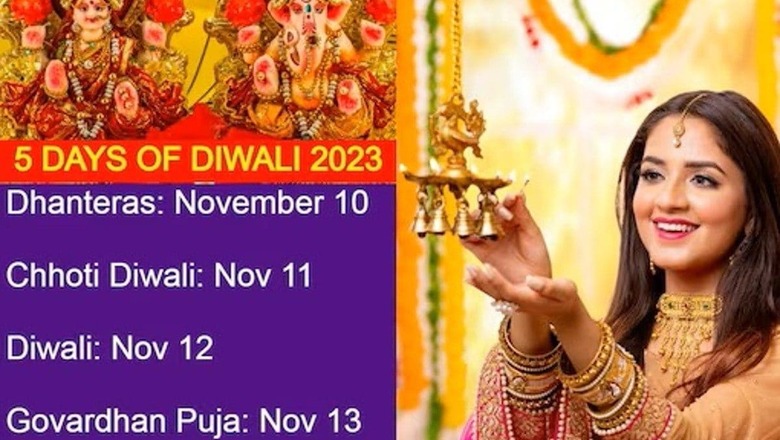
views
Diwali, also known as Deepavali, is one of the most important Hindu festivals of the year. It is a festival of lights that celebrates the triumph of good over evil and the victory of light over darkness. Diwali is celebrated on the darkest night of the lunar month of Kartika, which typically falls in the months of October or November. From its significance and traditions to the regional variations in its celebration, here are the various aspects of the religious festival.
When is Diwali in 2023? Date and Timing
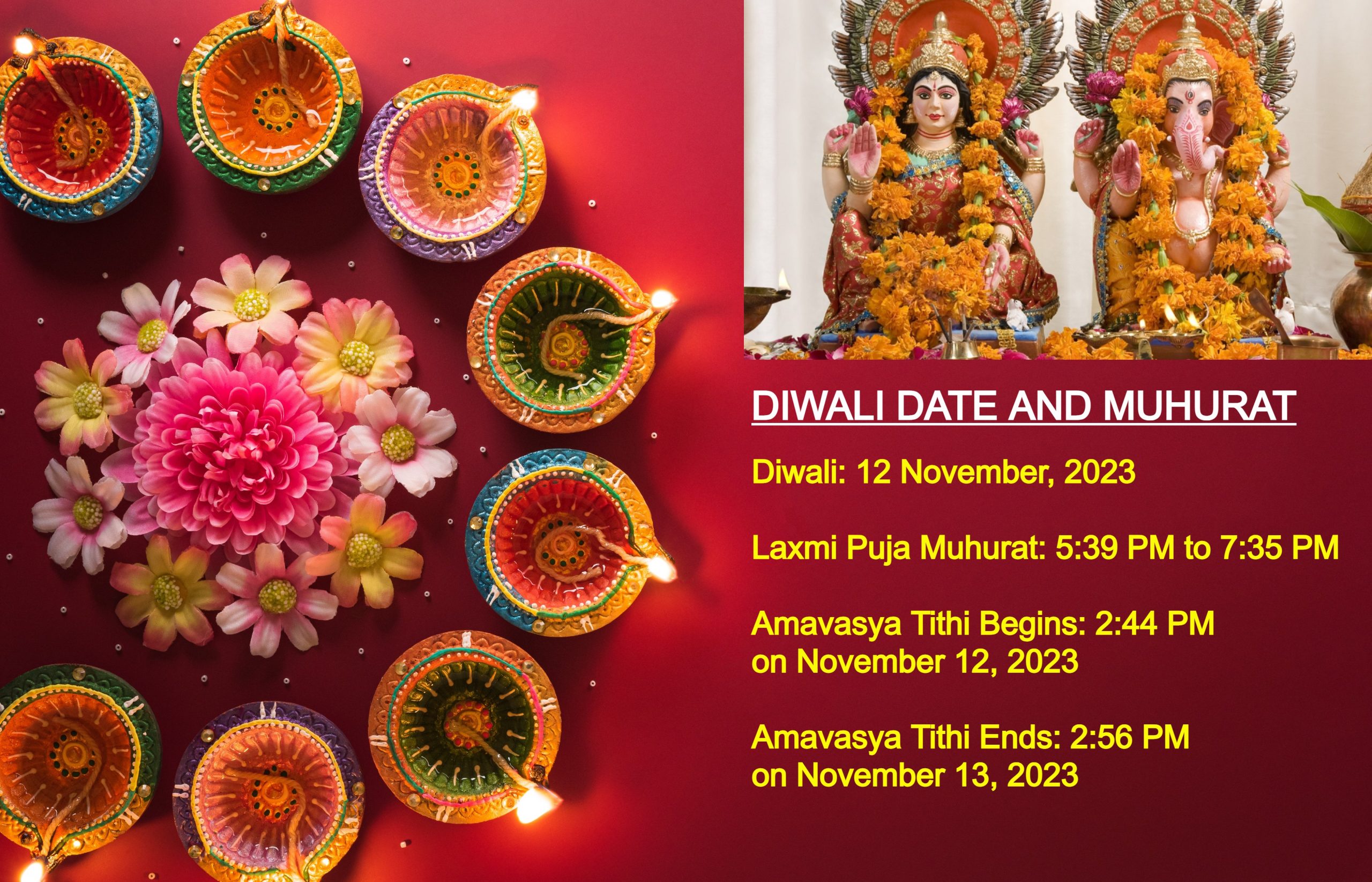
Diwali is celebrated on the fifteenth day of Kartik, the holiest month in the Hindu lunar calendar. This year, the festival of lights will be celebrated on Sunday, November 12. The auspicious festival typically spans five days, with each day having its unique significance and rituals.
Diwali Muhurat
Talking about the timings, the Diwali puja is performed during specific auspicious hours. Devotees seek the blessings of Goddess Lakshmi and Lord Ganesha for wealth, prosperity, and wisdom. According to Drik Panchang, the Lakshmi Puja Muhurat is anticipated to take place between 5:40 PM and 7:36 PM, which is the duration of 1 hour and 56 minutes. The other important timings are mentioned here:
Source: Drikpanchang
What is Diwali? History and Significance
The exact origins of Diwali remain undocumented, but several legends surrounding the festival all share a common theme: the triumph of good over evil. It can be said that different regions of the country commemorate this day for various reasons.
In northern India, Diwali is observed as the occasion when Lord Rama, accompanied by his wife Sita, and his brothers Lakshman and Hanuman, returned to Ayodhya following 14 years of exile and their victory over the demon king Ravana. As their return occurred on a moonless night (Amavasya), people lit earthen lamps on Diwali night to welcome them.
On the other hand, South Indians celebrate Diwali as the day when Lord Krishna vanquished the demon Narakasura. Additionally, it is believed that the divine union of God Vishnu and Goddess Lakshmi took place on this day. Other legends also suggest that Goddess Lakshmi was born on the new moon day of the Kartik month.
Diwali 2023: Celebration Date in Different Regions of India
Diwali is celebrated with great enthusiasm across India, but the dates and customs can vary from one region to another. Here’s a brief overview of Diwali celebration dates in different parts of India:
South India: November 12, 2023
Goa and West India: November 11, 2023 (usually the day before Diwali)
Varanasi: November 26, 2023
Punjab: November 12, 2023
All over India including West Bengal, Odisha, Assam, Maharashtra, Rajasthan, and Gujarat: November 12, 2023
Diwali 2023: 5 Days Festival
Diwali is a widely celebrated festival in India and among Hindus worldwide. It is not just a one-day festival, it spans five days, each with its own significance and customs:
Sources: Drikpanchang
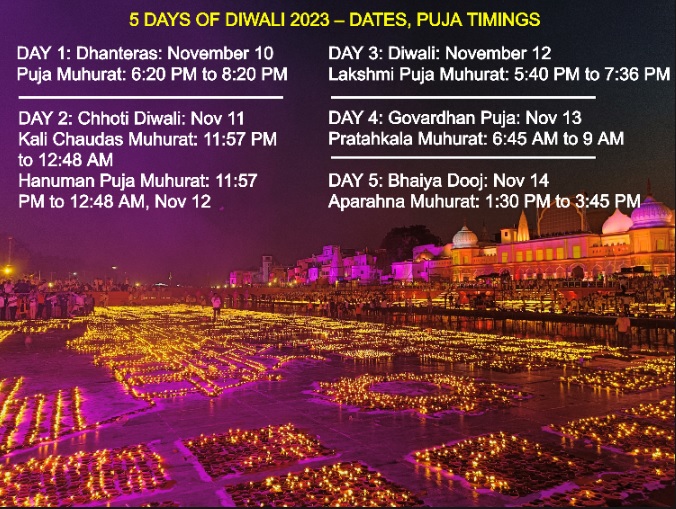
Day 1 – November 10, 2023 – Trayodashi, Dhanteras
Dhanteras is a festive celebration of wealth and prosperity, marking the auspicious beginning of Diwali. People engage in house cleaning, purchase new attire, and buy gold and silver, considering it auspicious on this day.
Day 2 – November 11, 2023 – Chaturdashi, Choti Diwali
Choti Diwali sets the stage for the grand main festival the following day. Homes are adorned with decorations, colourful rangoli designs, and oil lamps are lit.
Day 3 – November 12, 2023 – Amavasya, Diwali
On the main day of Diwali, people wear new clothes and gather with their families for prayers and pooja. The most auspicious time for worship, or Puja Mahurat, is from 05:40 pm to 07:36 pm. The exchange of gifts and sweets is an integral part of Diwali celebrations. Diyas and fireworks illuminate the night sky, and people indulge in special cuisines and sweets.
Day 4 – November 13, 2023 – Pratipada, Goverdhan Pooja and Padwa
Goverdhan Pooja celebrates Lord Krishna’s divine intervention, with devotees creating a replica of Goverdhan Hill using food items such as rice and sweets. This day also emphasises the importance of environmental conservation and sustainable practices. Padwa is a celebration of the bond between husband and wife, with husbands buying gifts for their wives. People also start new business accounts as it is considered auspicious.
Day 5 – November 14, 2023 – Dwitiya, Bhai Dooj
Bhai Dooj is a special day dedicated to celebrating the strong bond between brothers and sisters. It provides an opportunity to express love, gratitude, and blessings to strengthen the sibling relationship.
Diwali Puja Vidhi: Customs and Traditions
Diwali, known as the Festival of Lights, extends over a span of five days, each imbued with its own significance and customs.
- The initial day, Dhanteras, is an occasion for acquiring gold, silver, and other valuable or practical items.
- On the second day, Naraka Chaturdashi, people wake up early, perform ablutions, and kindle diyas to dispel malevolent forces.
- The third day marks the centrepiece of Diwali when people don new attire, adorn their homes with rangolis, lamps, and ornamental decorations, and offer prayers to Goddess Lakshmi.
- The fourth day is reserved for Govardhan Puja, a commemoration of Lord Krishna’s significance. During this day, people construct small heaps of cow dung symbolising the Govardhan mountain and engage in prayers.
- The fifth day, known as Bhai Dooj, is devoted to celebrating the cherished bond between brothers and sisters.
History of Diwali: Mythological Connection with Ramayana
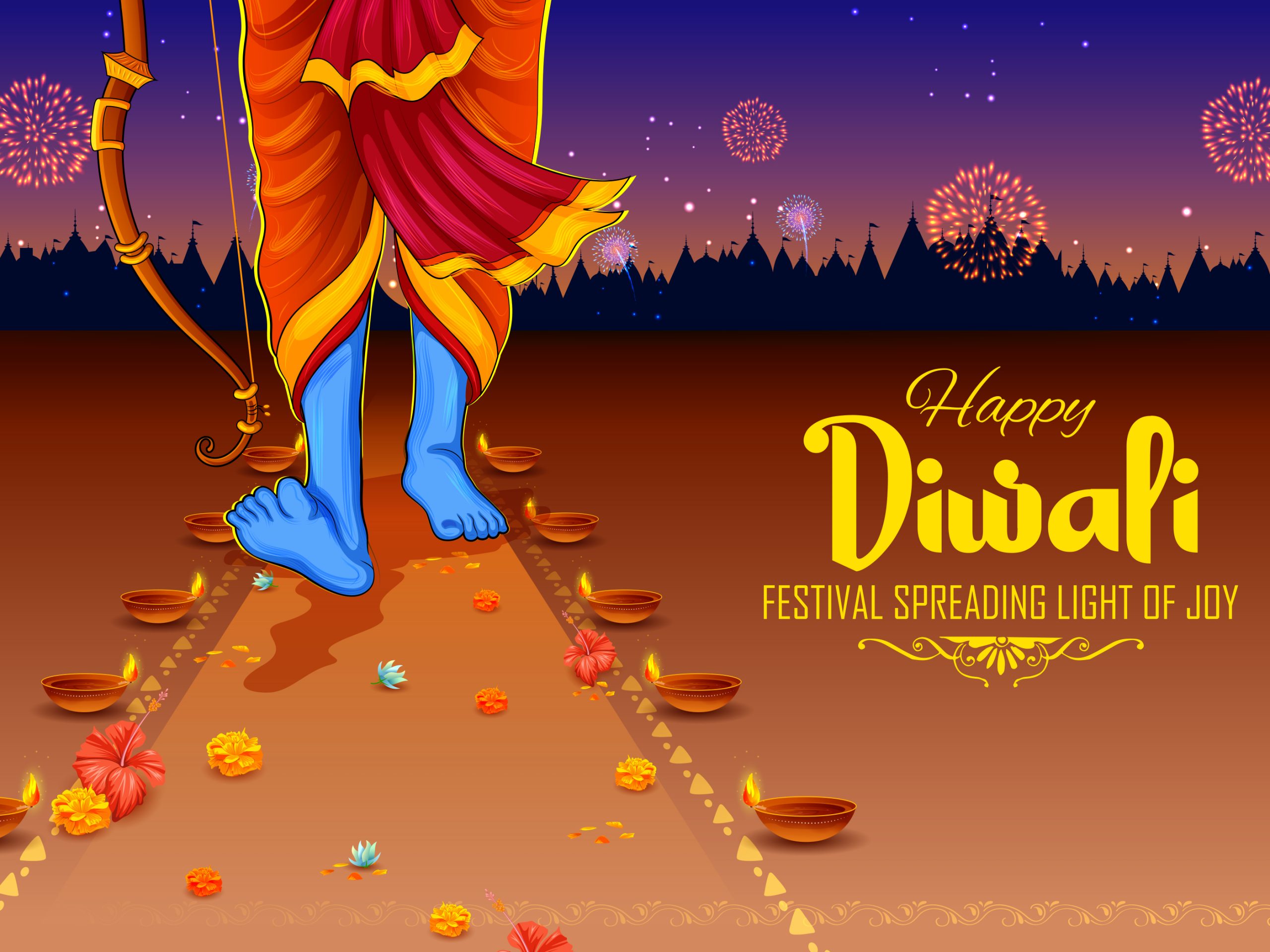
The most renowned Diwali narrative revolves around Lord Rama’s triumphant return to Ayodhya following 14 years of exile and his vanquishing of the demon king Ravana. During this exile, the wicked ruler Ravana of Lanka abducted Mata Sita. After encountering numerous challenges and embarking on a lengthy quest, Lord Rama ultimately defeated Lanka and rescued his beloved wife, Sita.
Significance of Diwali: The Festival of Lights
In jubilant celebration of this victory and the homecoming of King Rama, the people of Ayodhya illuminated the kingdom with clay lamps, exchanged sweets, and ignited fireworks. This tradition, still cherished by countless Diwali celebrants, is why we refer to Diwali as the “festival of lights.” This symbolizes the triumph of light and knowledge over darkness and ignorance.
Diwali Celebrations
Diwali celebrations include performing puja (prayers), lighting diyas (oil lamps), exchanging gifts, preparing special meals, and decorating homes with rangoli (colourful designs) and flower garlands.
The auspicious festival is synonymous with mouthwatering dishes and sweets. Traditional treats like mithai (sweets), namkeen (savouries), and homemade delicacies are prepared and shared with family and friends.
Diwali celebrations vary across India’s diverse regions. For instance, in North India, people play with firecrackers and light diyas, while South India focuses more on elaborate rituals and the preparation of sweets. Each region adds its unique touch to this vibrant festival.
Significance Of Lighting 13 Diyas On Diwali
Dhanteras or ‘Dhantrayodashi’ is the first day of five-day-long Diwali festivities. A total of 13 earthen pots are to be lit on the day of Diwali.
1. First diya protects the family from unexpected death. It is kept facing south near garbage outside the house to ward off death.
2. Second diya must be lit with ghee on the Diwali night and kept in front of your puja mandir/place at home to usher in good luck.
3. Third diya is supposed to be lit in front of Lakshmi to seek her blessings for good fortune, prosperity, and abundance.
4. Fourth diya is placed in front of tulsi and is meant to bring in peace and happiness in the household.
5. Fifth diya must be placed outside the main entrance of your house. It signifies welcoming the joy, love, good luck and happiness to your home.
6. Sixth diya lit with mustard oil is supposed to be placed under a peepal tree as it is considered auspicious. It signifies relief from financial crisis, health woes; and is meant to bring fame and fortune.
7. Seventh diya needs to be lit in any temple in the vicinity of your house.
8. Eighth diya must be lit near the garbage.
9. Place the ninth diya outside your washroom to maintain the flow of positive energy around the house.
10. Light the tenth diya at the roof coping as it signifies protection.
11. Decorate the window with the eleventh diya to spread the cheer.
12. Place the twelfth diya on the terrace or roof top to celebrate the festive spirit.
13. Decorate the intersection of your house by lighting the thirteenth diya.
How To Celebrate Green Diwali 2023?
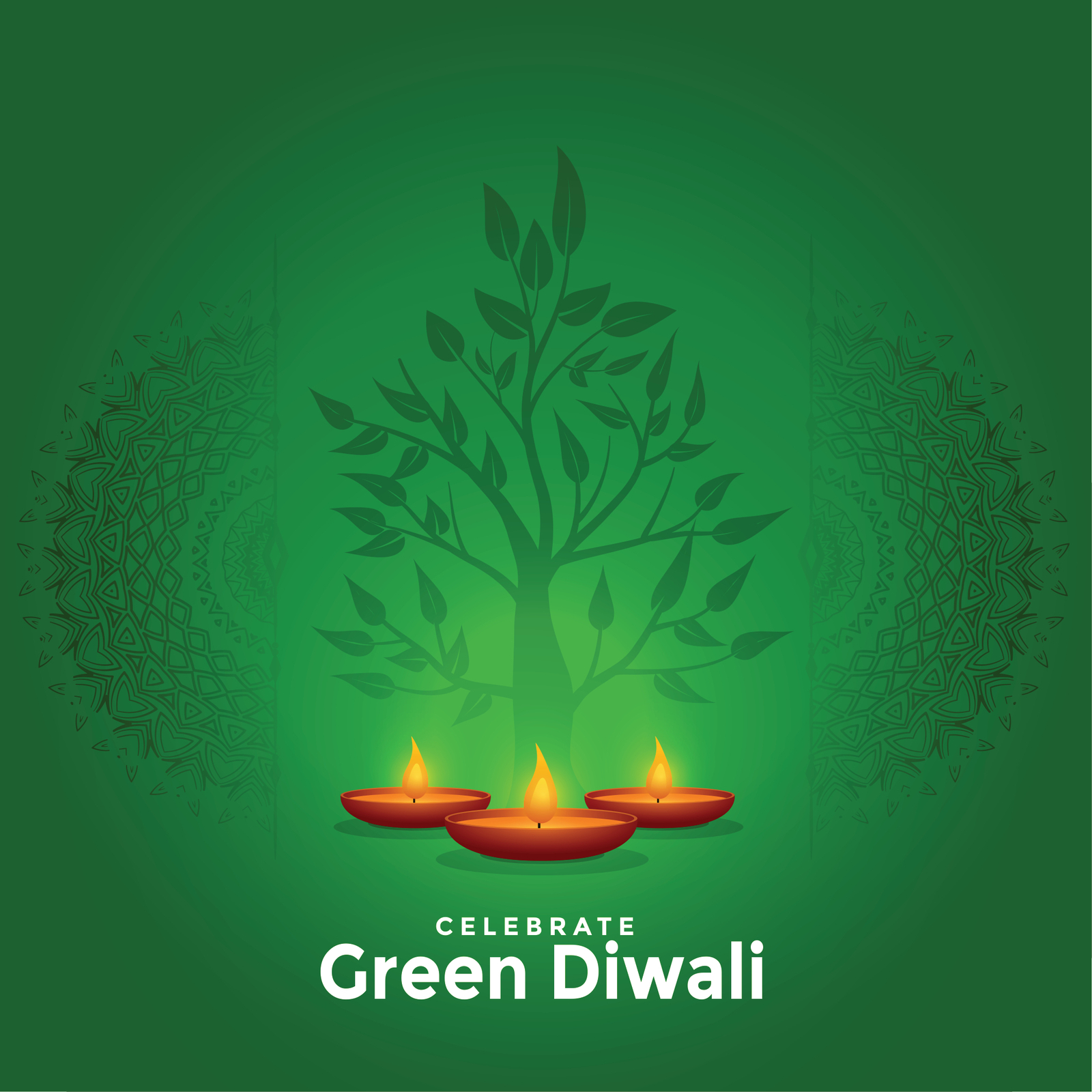
- Skip the firecrackersFirecrackers are a major source of air pollution and noise pollution, and they can also be harmful to animals. Instead, decorate your home with diyas (earthen lamps) and light them up on Diwali night.
- Use eco-friendly giftsInstead of giving plastic toys or other disposable items, give gifts that are made from sustainable materials, such as handmade crafts, organic food, or gift certificates to local businesses.
- Make your own rangoliRangoli is a traditional Indian art form that uses colored powders to create beautiful designs on the ground. Instead of buying artificial rangoli colors, make your own using natural ingredients such as turmeric, rice flour, and flowers.
- Reduce your electricity consumptionIf you’re decorating your home with lights, use LED lights instead of incandescent lights. LED lights use less energy and last longer.
- Recycle and compostDiwali is a time for cleaning and getting rid of old things. Instead of throwing away your trash, recycle and compost as much as possible.
When is Dhanteras 2023?
Dhanteras will be celebrated on November 10, 2023.
What is the muhurat time for Diwali in 2023?
According to Drik Panchang, the Lakshmi Puja Muhurat is anticipated to take place between 5:39 PM and 7:35 PM, which is the duration of 1 hour and 56 minutes.
Which day is Diwali in 2023?
Diwali will be celebrated on Sunday, November 12, 2023.
What are the 5 days of Diwali?
The 5 days of Diwali 2023 are Dhanteras, Naraka Chaturdasi (Choti Diwali), Lakshmi Puja (Diwali), Govardhan Puja, and Bhai Dooj.
How many days is Diwali?
Diwali is a 5-day festival.
What is the time of Lakshmi Pooja?
According to Drik Panchang, the Lakshmi Puja Muhurat is anticipated to take place between 5:39 PM and 7:35 PM, which is the duration of 1 hour and 56 minutes.
Are Crackers Banned in Diwali 2023?
The Delhi government announced the re-imposition of a ban on the production, sale, storage, and utilization of all types of firecrackers in the capital region during this Diwali season.
Which countries declared a Diwali holiday?
The main day of the festival of Diwali (the day of Lakshmi Puja) is an official holiday in Fiji, Guyana, India, Malaysia, Mauritius, Myanmar, Nepal, Pakistan, Singapore, Sri Lanka, Suriname, and Trinidad and Tobago.
When is Choti Diwali?
Choti Diwali will be celebrated on November 11, 2023.
Is it Diwali or Deepavali?
The word “Diwali” comes from the Sanskrit word “Deepavali,” which means “rows of lighted lamps.” So, both words can be used.
When was Diwali in 2022?
Diwali was celebrated on October 24, 2022.
Where did Diwali get its name?
The name is derived from the Sanskrit term “Deepavali”, meaning “row of lights.” The festival generally symbolises the victory of light over darkness.
Where did Diwali come from?
According to the Jain tradition, this practice of lighting lamps first began on the day of Mahavira’s nirvana in 527 BCE, when 18 kings who had gathered for Mahavira’s final teachings issued a proclamation that lamps be lit in remembrance of the “great light, Mahavira”.
Where is Diwali celebrated in the world?
India isn’t the only place that celebrates the festival of lights. Although Diwali is primarily an Indian festival, it is also widely observed in Malaysia, Singapore, Nepal, and Fiji. In fact, in some countries, Diwali is a national holiday.
















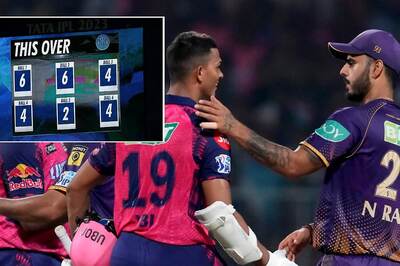
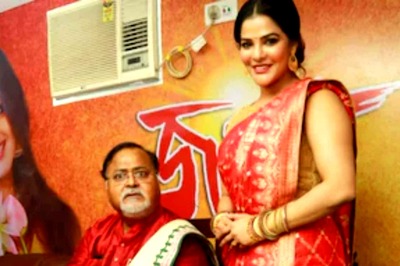
Comments
0 comment